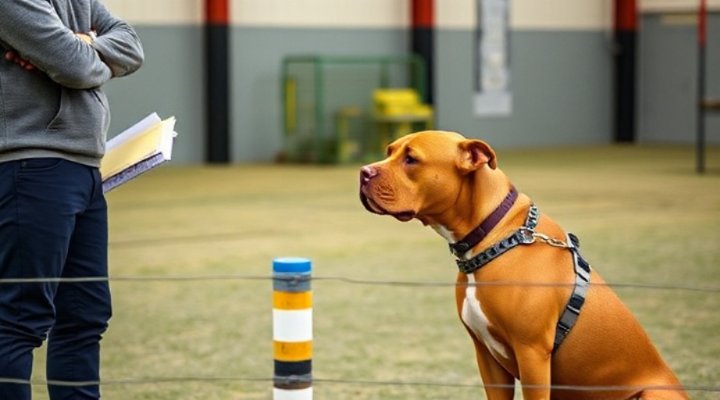Dog behavior modification is more than just teaching tricks—it’s about creating harmony between you and your canine companion. Through scientifically proven methods, we can address everything from excessive barking to separation anxiety. Let’s explore how modern techniques can transform your dog’s behavior.

Understanding Dog Behavior Modification
At its core, dog behavior modification involves identifying the root causes of unwanted behaviors and systematically changing them. Unlike basic obedience training, which teaches commands like ‘sit’ and ‘stay,’ behavior modification addresses more complex issues like aggression, fear, or compulsive behaviors.
For example, if your dog barks excessively at visitors, a behavior modification program would first determine why (is it fear, territoriality, or excitement?) before implementing a tailored solution. This might involve desensitization techniques combined with positive reinforcement.

The Science Behind Effective Behavior Change
Modern dog behavior modification relies on principles from animal psychology, particularly operant conditioning and classical conditioning. Positive reinforcement—rewarding desired behaviors—is generally more effective and humane than punishment-based methods.
According to research from the American Veterinary Society of Animal Behavior, reward-based training creates stronger learning and better human-animal bonds. For instance, when working with a dog that jumps on guests, rewarding ‘four on the floor’ (all paws on the ground) proves more effective than scolding the jumping.
Common Behavior Issues and Solutions
Let’s examine some frequent behavior problems and their science-backed solutions:
- Separation Anxiety: Gradual desensitization to departures combined with creating positive associations (like special toys only available when alone)
- Leash Reactivity: Counter-conditioning to change the dog’s emotional response to triggers
- Destructive Chewing: Providing appropriate chew toys and managing the environment
Our article on finding a dog behavior specialist offers additional professional insights for severe cases.

Positive Reinforcement in Action
Positive reinforcement isn’t just about treats—it’s about timing and consistency. When my neighbor’s rescue dog, Max, would hide at the sight of strangers, we used a progressive approach:
- First, strangers would simply stand at a distance where Max remained comfortable
- They’d toss high-value treats without making eye contact
- Gradually decrease distance over multiple sessions
Within weeks, Max went from hiding to cautiously accepting treats from new people. This demonstrates how patience and the right techniques can reshape behavior.
When to Seek Professional Help
While many behavior issues can be addressed at home, certain situations warrant professional intervention:
- Aggression that poses safety risks
- Extreme fear responses
- Self-harming behaviors
Programs like board and train can provide intensive rehabilitation for serious cases. The Certification Council for Professional Dog Trainers maintains standards for qualified professionals.

Creating a Behavior Modification Plan
An effective plan includes:
- Clearly defining the target behavior
- Identifying triggers and maintaining factors
- Selecting appropriate reinforcement strategies
- Establishing measurable goals
- Implementing consistent management techniques
Remember that progress isn’t always linear. Like humans learning new habits, dogs may have setbacks before achieving lasting change.
The Role of Environment in Behavior
Often overlooked, environmental management plays a crucial role in dog behavior modification. Simple changes like:
- Using baby gates to limit access to problem areas
- Providing mental stimulation through food puzzles
- Establishing consistent routines
can significantly reduce unwanted behaviors. Our guide on dog behavior courses offers more environmental strategies.

Success Stories: From Problem to Model Pet
Take Bella, a terrier mix who would resource guard her toys. Through a carefully structured program that:
- Taught ‘drop it’ using high-value trades
- Gradually decreased distance during toy exchanges
- Rewarded calm behavior around valued items
she transformed into a dog who willingly shares. Such transformations demonstrate the power of proper behavior modification techniques.
Maintaining Good Behavior Long-Term
Consistency is key to lasting results. Even after ‘fixing’ a behavior, occasional reinforcement helps maintain progress. Consider:
- Monthly ‘refresher’ training sessions
- Continuing mental stimulation activities
- Monitoring for early signs of regression
For ongoing support, our online training resources offer convenient access to expert advice.
Related Keywords: canine behavior correction, dog psychology, behavior adjustment training, positive dog training, solving dog behavior problems
